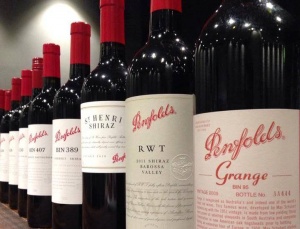Treasury Wine Estates heading for "disaster" over surplus stock issues in China

Australian wine giant Treasury Wine Estate is facing a supply glut resulting in deep discounting amongst wholesalers and retailers in China.
The over-supply issues are largely centred around Wolf Blass, Rawson’s Retreat and some of the cheaper Berringer wines, which has resulted in some distributors reporting they have up to three year’s worth of the low end stock.
Industry analysts are now questioning TWE’s long term viability n China after its rapid expansion in the Asian mainland.
“They [Treasury] are heading for a disaster in my view,” one Chinese distributor told Financial Review. TWE has seen its stock soar five fold over the past four years on the back of booming demand from the Chinese market for Penfolds. China accounts for a full half of Treasury’s sales in Asia, and 80% of its growth in the region, according to Citi Research.
Asia is forecast to overtake both the Americas and Australia and New Zealand as the company’s largest profit centre. While demand for Penfolds remains strong, there has been only “marginal” interest in Treasury’s other brands.
“TWE has only on brand and that is Penfolds, none of the other stuff is selling,” another wine industry insider said. The supply issue is expected to reach crisis point in the coming year, when Treasury beings to sell its latest vintage in June for delivery in October. The company claimed that it was “comfortable” with the stock levels in China. “We have a disciplined approach to reviewing these levels on a regular basis,” said the spokesperson.
The supply issue for Treasury is of its own making, and arises from its attempts to take advantage of the strong demand for Penfolds by selling it alongside other labels such as Wolf Blass. This sales strategy effectively forces distributors to buy Treasury's lower end labels if they want access to the premium Penfolds brands. Buyers have to spend about the same on Penfolds as they do on othe Treasury brands.
"TWE have succeeded in filling a whole lot of warehouses in China, but I'm not sure much wine has actually been sold," said one distributor. Another wholesaler said he had 50,000 six bottle cases of Rawson’s and an additional 30,000 cases of other lower end Treasury wines being held in 33 20 foot shipping containers.
And Treasury has marked this down as revenue, even though much of the wine has yet to reach the market for sale. One distributer estimated that there could be up to 800,000 surplus cases of Wolf Blass, Berringer and other Treasury labels across China.
Others said the situation was even worse, estimating that the surplus stock was sitting at over one million cases, the equivalent of around a fifth of Treasury’s entire forecast volume for China this year. And if wholesalers want to buy Penfold’s latest vintage, they will be forced to buy even more of the less desirable brands in the coming months, pushing down the price of the lower tier wines.
For example, Chinese online retailer Yesmywine.com is selling Rawson's at 189 yuan for six bottles or 31.5 yuan ($6.59) per bottle. This compares to advertised prices of between $7.99 and $11 in Australia.
However, it would appear that distributors have had enough, with one declaring he wouldn’t be buying any more wine from Treasury. “I’m not willing to put myself in that position any more,” he said. “The problem is they are bundling wines which nobody wants and are not selling. That’s why people are discounting to the hilt.”
Another industry insider told Financial Review that Treasury was so keen to get rid of stock it had offered him a 10% discount for taking 40,000 (six-bottle) cases of Rawson's but even at just over $4 a bottle he was still not confident of selling it into China.
After tax, shipping and other expenses are taken into account, the break even price is over $6 a bottle, leaving barely any margin for retailers or wholesalers.
Treasury Wine Estates shares tumbled as much as 13% on Thursday after the winemaker said it was experiencing delays at Chinese customs for some of its Australian products.
The company experienced similar over-supply issues in the US in 2013, when it was forced to destroy $35 million worth of wine as part of an overall impairments of $160 million.
